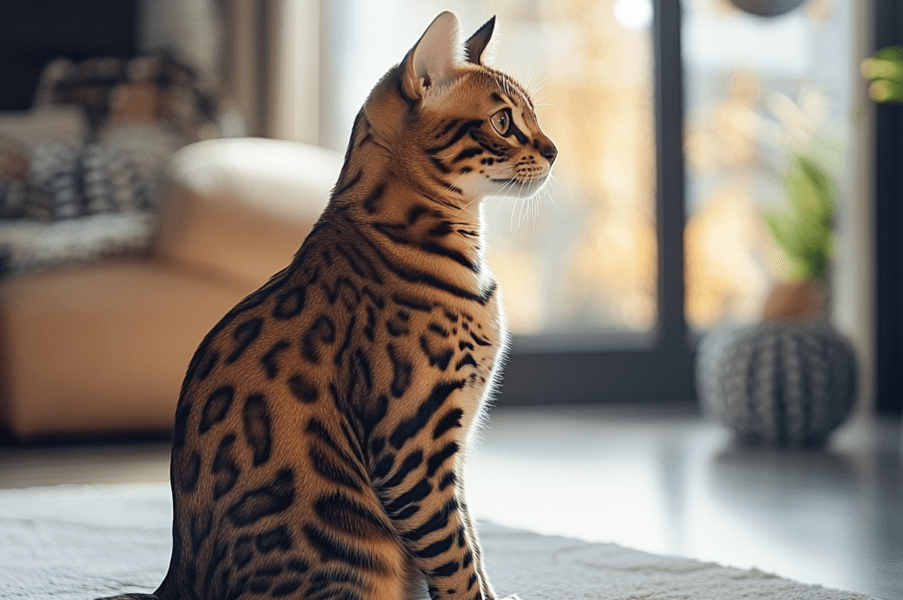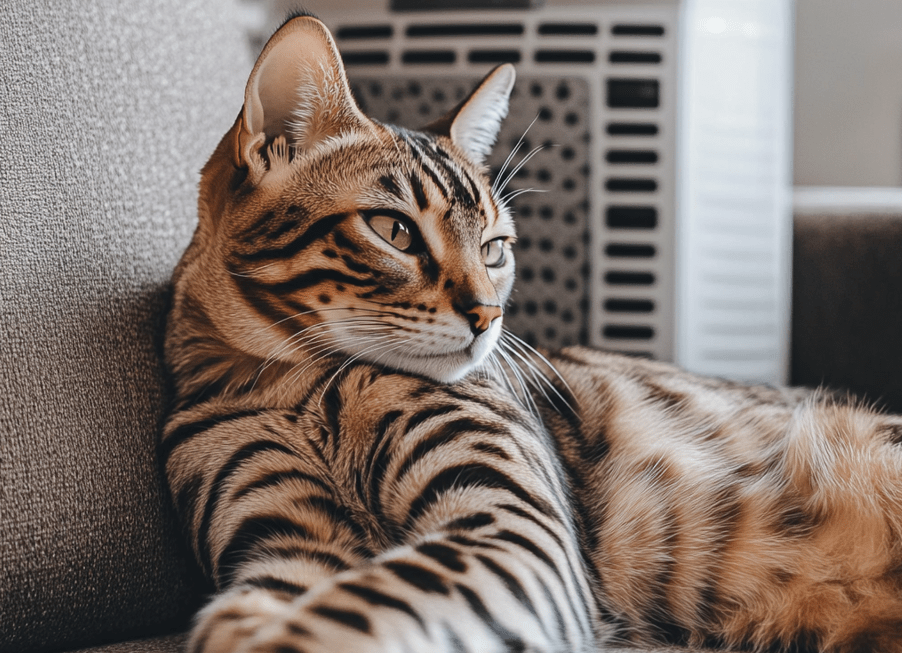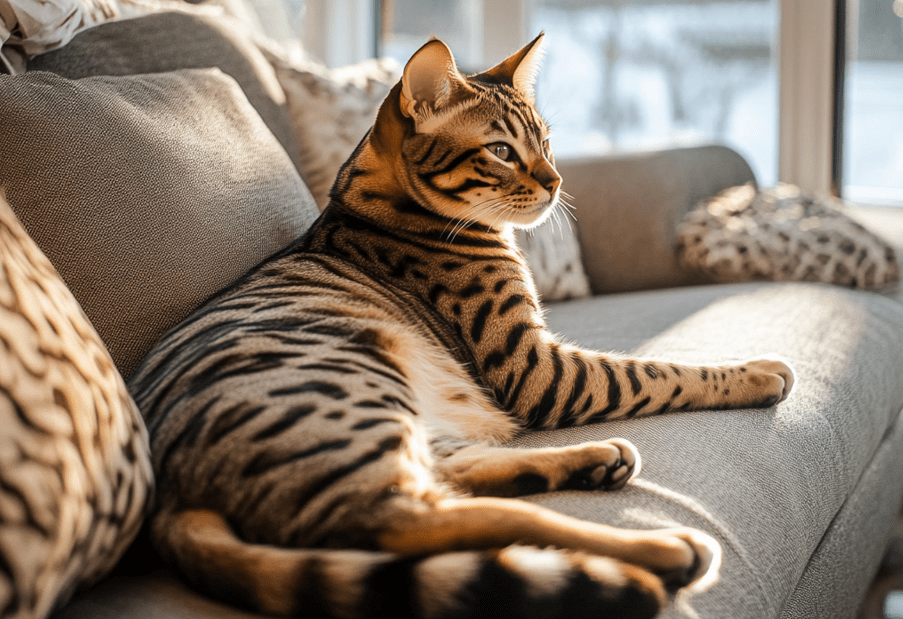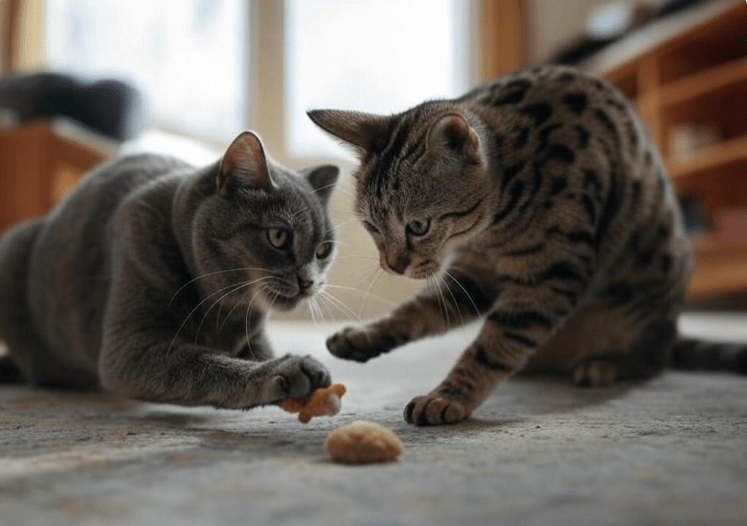
Bengal cats are known for their striking appearance, energetic personalities, and unique needs, which extend to their litter box preferences. Selecting the perfect litter box for a Bengal cat can be challenging, especially for owners of these picky felines. Bengals often demand spacious, clean, and comfortable setups that align with their active and fastidious nature. This comprehensive guide explores everything you need to know about choosing the right litter box for your Bengal cat, ensuring their comfort and your peace of mind.
Why Bengal Cats Are Picky About Their Litter Boxes
Bengal cats, with their wild ancestry and high-energy demeanor, have specific instincts that influence their litter box habits. Understanding these traits is key to selecting a litter box that meets their needs:
Territorial Instincts: Bengals are territorial and may reject a litter box if it feels cramped or unclean.
High Activity Levels: Their playful and athletic nature means they need ample space to move comfortably.
Sensitivity to Smell and Texture: Bengals are often finicky about litter texture, scent, and cleanliness.
Preference for Privacy: Some Bengals prefer covered boxes for a sense of security, while others dislike confined spaces.
By catering to these preferences, you can ensure your Bengal cat uses their litter box consistently, reducing stress for both of you.
When Choosing a Litter Box for a Bengal Cat
Selecting the ideal litter box for a Bengal cat involves evaluating several factors. Here’s a detailed breakdown of what to consider:

1. Size and Space
Bengals are larger and more active than many other cat breeds, so a spacious litter box is essential. A box that’s too small can make your cat feel cramped, leading to avoidance or accidents.
Recommended Dimensions: Look for a litter box at leastmeasuring at least 18 inches long, 14 inches wide, and 7 inches high.
Why It Matters: Bengals need room to turn around, dig, and cover their waste comfortably.
Tip: Consider oversized litter boxes or storage bins repurposed as litter boxes for extra space.
2. Covered vs. Uncovered Litter Boxes
Bengals have varied preferences when it comes to covered or uncovered litter boxes. Here’s a look at the pros and cons:
Covered Litter Boxes:
Pros: Provide privacy, reduce odor, and contain litter scatter.
Cons: May feel restrictive for some Bengals, trap odors inside, and require frequent cleaning.
Uncovered Litter Boxes:
Pros: Offer easy access and a sense of openness.
Cons: More litter scatter and less odor control.
Recommendation: Test both options to see which your Bengal prefers. If using a covered box, ensure the entrance is wide and the interior is spacious.
3. Material and Durability
Bengal cats are strong and active, so the litter box should be made of sturdy materials like high-quality plastic. Avoid flimsy boxes that may crack or tip over during vigorous digging.
Why It Matters: A durable box withstands the Bengal’s energetic behavior.
Tip: Look for boxes with smooth surfaces for easy cleaning and non-slip bases for stability.
4. Ease of Cleaning
Bengals are fastidious and may avoid a dirty litter box. Choose a box that’s easy to clean to maintain hygiene.
Features to Look For:
1.Smooth, non-porous surfaces.
2.Removable liners or sifting trays for quick litter changes.
3.Accessibility for scooping without awkward angles.
Tip: Scoop daily and fully clean the box weekly to keep it appealing to your Bengal.
5. Location and Placement
Where you place the litter box can significantly impact your Bengal’s willingness to use it.
Ideal Locations:
1.Quiet, low-traffic areas for privacy.
2.Away from food and water bowls.
3.Easily accessible without obstacles.
Why It Matters: Bengals may avoid boxes in noisy or cramped spaces.
Tip: Provide multiple litter boxes (one per cat plus one extra) in multi-cat households.
6. Litter Type Compatibility
The type of litter you use can affect your Bengal’s litter box experience. Bengals often have strong preferences for litter texture and scent.
Popular Litter Types:
Clumping Clay: Easy to scoop, controls odor, but some Bengals dislike the texture.
Crystal/Silica Gel: Absorbs moisture well, but may feel unnatural to Bengals.
Natural Litters (e.g., pine, corn): Eco-friendly, but test for your cat’s preference.
Tip: Avoid heavily scented litters, as Bengals are sensitive to strong smells.
Recommendation: Experiment with small amounts of different litters to find the one your Bengal likes best.
Types of Litter Boxes Suitable for Bengal Cats
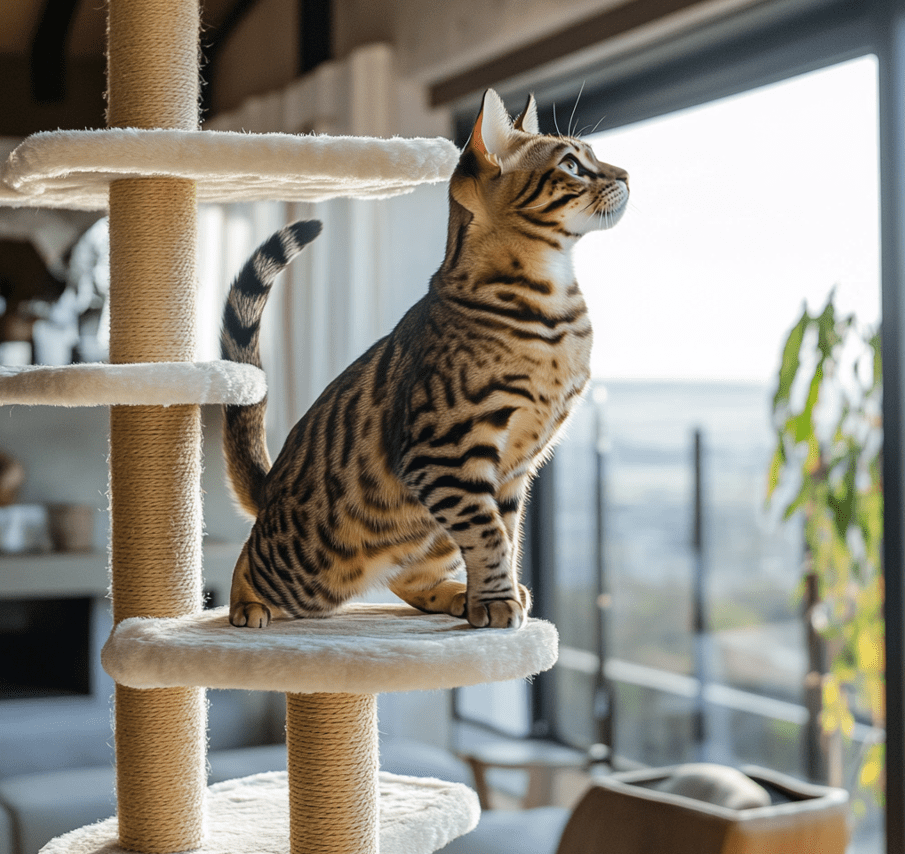
There are several types of litter boxes that cater to the needs of Bengal cats. Here’s a breakdown of the best options:
1. Standard Open Litter Box
Best For: Bengals who prefer open spaces and easy access.
Pros: Affordable, spacious, and easy to clean.
Cons: More litter scatter and less odor control.
Example Product: Petmate Jumbo Litter Box (20” x 14” x 7”).
2. Covered Litter Box
Best For: Bengals who value privacy and owners who want less mess.
Pros: Contains litter and odor, provides a sense of security.
Cons: May feel confining for some Bengals.
Example Product: Catit Jumbo Hooded Cat Litter Pan.
3. Self-Cleaning Litter Box
Best For: Busy owners who want low-maintenance solutions.
Pros: Automatically scoops waste, maintains cleanliness.
Cons: Expensive, noisy, and may startle some Bengals.
Example Product: Litter-Robot 4.
4. Top-Entry Litter Box
Best For: Bengals who like to dig vigorously.
Pros: Reduces litter tracking, modern design.
Cons: May be challenging for older or less agile Bengals.
Example Product: Modkat Top-Entry Litter Box.
5. Disposable Litter Box
Best For: Travel or temporary use.
Pros: Convenient, no cleaning required.
Cons: Not cost-effective for long-term use.
Example Product: Nature’s Miracle Disposable Litter Box.
Common Litter Box Problems and Solutions for Bengal Cats
Even with the perfect litter box, issues can arise. Here’s how to address common problems:
1. Litter Box Avoidance
Possible Causes: Dirty box, small size, poor location, or health issues.
Solutions:
1.Scoop daily and clean weekly.
2.Upgrade to a larger box.
3.Relocate to a quieter area.
4.Consult a vet to rule out urinary tract issues.
2. Excessive Digging or Scattering
Possible Causes: Instinctual behavior or unsuitable litter.
Solutions:
1.Use a high-sided or top-entry box.
2.Switch to a heavier litter to reduce scatter.
3.Place a litter mat around the box.
3. Odor Issues
Possible Causes: Infrequent cleaning or poor ventilation.
Solutions:
1.Use odor-absorbing litter or additives.
2.Clean the box more frequently.
3.Ensure good airflow around the box.
4. Stress-Related Issues
Possible Causes: Changes in routine, new pets, or loud environments.
Solutions:
1.Maintain a consistent cleaning schedule.
2.Provide a calm, stable environment.
3.Use calming products like Feliway diffusers.
How to Transition Your Bengal to a New Litter Box
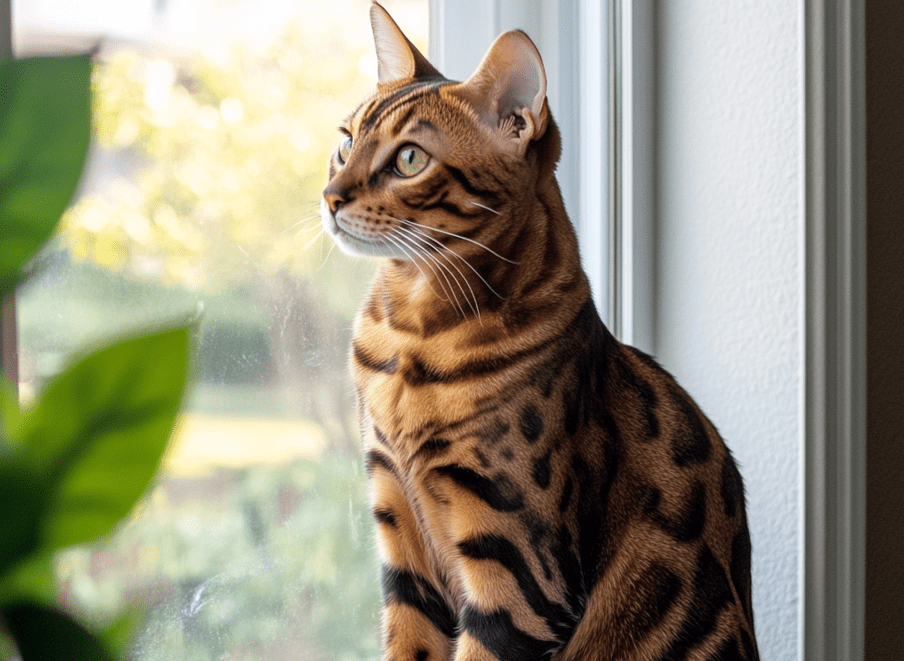
Switching to a new litter box can be stressful for a Bengal. Follow these steps for a smooth transition:
Introduce Gradually: Place the new box next to the old one and let your Bengal explore it.
Use Familiar Litter: Fill the new box with the same litter your cat is used to.
Encourage Exploration: Sprinkle catnip or treats near the box to attract your Bengal.
Monitor Behavior: Watch for signs of stress or avoidance and adjust as needed.
Phase Out the Old Box: Once your Bengal consistently uses the new box, remove the old one.
Tip: Be patient, as some Bengals take weeks to fully adjust.
Additional Tips for Bengal Cat Owners
Multiple Boxes: Bengals often prefer multiple litter boxes in different locations.
Health Monitoring: Changes in litter box habits can indicate health issues like UTIs or stress.
Litter Depth: Bengals usually prefer 2–3 inches of litter for digging.
Regular Vet Checkups: Annual exams can catch health issues early.
Recommended Products for Bengal Cat Litter Boxes
Here’s a curated list of top-rated litter boxes and accessories for Bengal cats:
Petmate Jumbo Litter Box ($15–$20): Spacious and affordable.
Catit Jumbo Hooded Cat Litter Pan ($30–$40): Great for privacy lovers.
Litter-Robot 4 ($699): High-tech, self-cleaning option.
Modkat Top-Entry Litter Box ($90): Sleek and scatter-proof.
Arm & Hammer Clump & Seal Litter ($10–$15): Bengal-friendly clumping litter.
Tip: Check online retailers like Amazon or Chewy for deals and reviews.
Conclusion
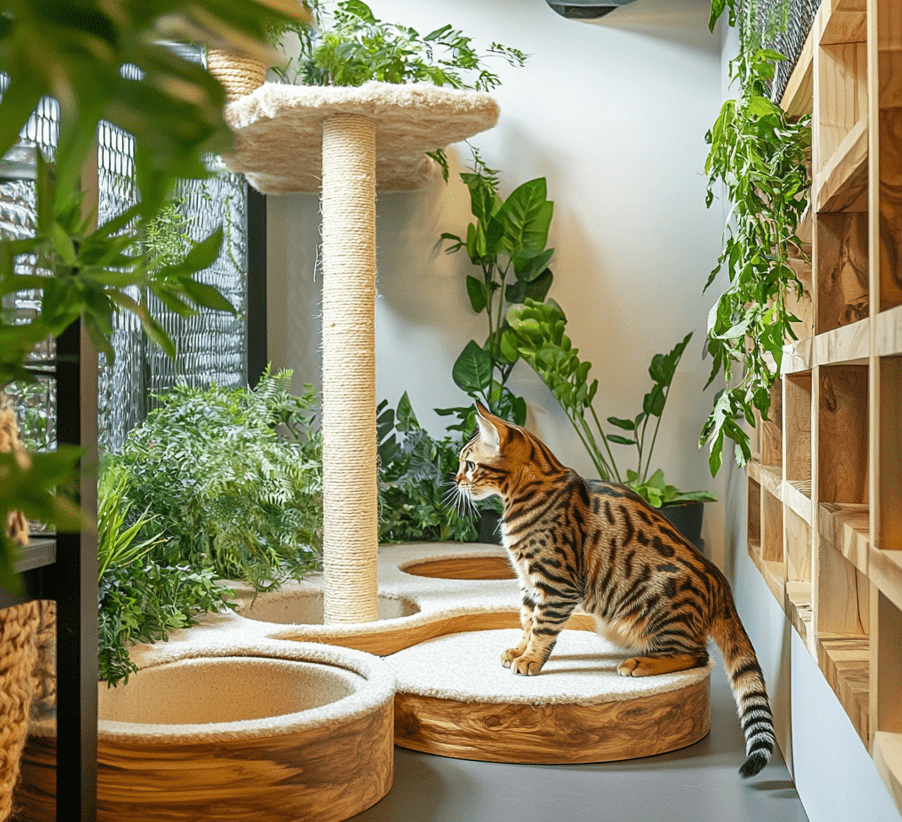
Choosing the right litter box for a Bengal cat is crucial for their comfort and your home’s cleanliness. By prioritizing size, durability, ease of cleaning, and your Bengal’s unique preferences, you can create a litter box setup that works for both of you. Whether you opt for a spacious open box, a high-tech self-cleaning model, or a sleek top-entry design, the key is to observe your Bengal’s behavior and make adjustments as needed. With the right litter box, your picky Bengal will feel at ease, and you’ll enjoy a cleaner, happier home.

